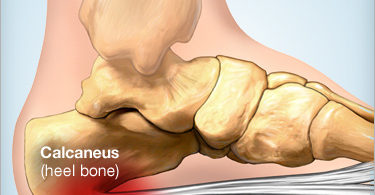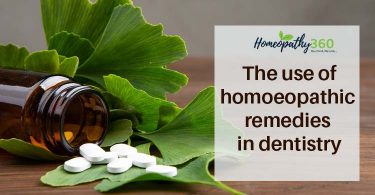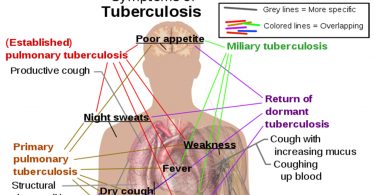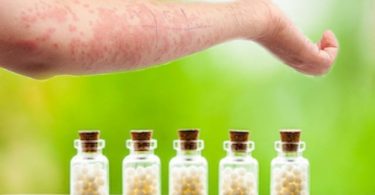SCHIZOPHRENIA AND IT’S HOMOEOPATHIC APPROACH
Dr. R Lalmuanpuia
PGT (Part II), Department of Psychiatry, Bakson Homoeopathic Medical College and Hospital, Greater Noida, DBRAU, U.P.
B.H.M.S (Solan Homoeopathic Medical College and Hospital, Solan, H.P.U., H.P.)
Abstract: Schizophrenia is a chronic and severe mental disorder affecting 20 million people worldwide. It is characterized by distortions in thinking, perception, emotions, language, sense of self, and behaviour . In India, where more than 1.1 billion people reside, the prevalence of schizophrenia is about 3/1,000 individuals . This article primarily focuses on an overview of Schizophrenia and a detailed homoeopathic approach to this complex mental illness.
Keywords– Schizophrenia, homoeopathy, 4 As, delusions or hallucinations, rubrics, miasms.
INTRODUCTION:
Schizophrenia is a serious psychiatric disorder comprising a group of disorders with heterogeneous etiologies, involving changes in perception, emotion, cognition, thinking, and behaviour; which may result in the combination of hallucinations, delusions, and extremely disordered thinking and behaviour that impairs the individual’s daily functioning. Eugene Bleuler (1911) coined the term “Schizophrenia”, to express the presence of schisms/split among thought, emotion, and behaviour in patients with the disorder . Bleuer identified specific fundamental symptoms of schizophrenia to develop internal mental schisms of patients, known as “4 As”;
(1)-Associational disturbances of thought, (e.g., looseness, haphazard thinking)
(2)-Affective disturbances, like; mood disorders,
(3)-Autism; impairs the ability to communicate, and
(4)-Ambivalence .
The peak ages of onset of Schizophrenia are 10 to 25 years for men and 25 to 35 years for women. When onset occurs after age 45 years, the disorder is characterized as late-onset schizophrenia. In India, Schizophrenia is more common in men, the age of onset for men tends to be earlier than that for women by an average of about 5 years. Overall, men with schizophrenia tend to have more negative symptoms, whereas women exhibit more affective symptoms. According to the WHO Mental Health Gap Action Programme in India, the prevalence rate is 200 cases per 100,000 people for schizophrenia. In the case of monozygotic twins, there is an approximately 50 % concordance rate for schizophrenia, which is 4 to 5 times the concordance rate in dizygotic twins or the rate of occurrence found in other first-degree relatives (i.e., siblings, parents, or offspring). The risk of developing Schizophrenia increases as the father’s age (above 60 years of age) at the time of conception, or if one’s biological mother has experienced a serious infection during pregnancy. The lifetime prevalence of alcohol within schizophrenia was 40%. Alcohol abuse increases the risk of psychotic symptoms. People with schizophrenia have an increased prevalence of abuse of common street drugs. High levels of cannabis use (more than 50 occasions) were at six-fold increased risk of schizophrenia compared with non-users. The use of amphetamines, cocaine, and similar drugs should raise particular concern because of their marked ability to increase psychotic symptoms.
Subtypes:
Five subtypes of schizophrenia have been described based predominantly on clinical presentation:
1). Paranoid Type: Characterized by the preoccupation with one or more delusions or frequent auditory hallucinations (classically; characterized mainly by the presence of delusions of persecution or grandeur). They are typically tense, suspicious, guarded, reserved, and sometimes hostile or aggressive, but they can occasionally conduct themselves adequately in social situations.
2). Disorganized Type: Characterized by a marked regression to primitive, symptoms that meet the criteria for the catatonic type. Usually active but in an aimless, nonconstructive manner. Their thought disorder is pronounced, and their contact with reality is poor.
3). Catatonic Type: Marked disturbance in motor function, may involve; Stupor, Negativism, Excitement, Rigidity, or Posturing. Sometimes, a rapid alternation between extremes of excitement and stupor. Associated features include stereotypies, mannerisms, and waxy flexibility.
4). Undifferentiated Type: Frequently, patients who clearly have schizophrenia cannot be easily fit into one type or another. These patients are classified as having schizophrenia of the undifferentiated type .
5). Residual Type: Characterized by continuing evidence of the schizophrenic disturbance in the absence of a complete set of active symptoms or of sufficient symptoms to meet the diagnosis of another type of schizophrenia; emotional blunting, social withdrawal, eccentric behaviour, illogical thinking, and mild loosening of associations.
Diagnosis :
Diagnostic and Statistical Manual of Mental Disorders, Fifth Edition (DSM-5) Diagnostic Criteria for Schizophrenia :
A–. Two (or more) of the following, each present for a significant portion of time during 1 month (or less if successfully treated). At least one of these must be (1 ), (2), or (3):
(1). Delusions/
(2). Hallucinations/
(3). Disorganized speech (e.g; frequent derailment or incoherence)/
(4). Grossly disorganized or catatonic behaviour/
(5). Negative symptoms (i.e., diminished emotional expression or avolition).
B–. For a significant portion of the time since the onset of the disturbance, level of functioning in one or more major areas of functioning, such as work, interpersonal relations, or self-care, is markedly below the level achieved before the onset (or when the onset is in childhood or adolescence, there is failure to achieve expected level of interpersonal, academic, or occupational functioning).
C–. Continuous signs of the disturbance persist for at least 6 months. This 6-month period must include at least 1 month of symptoms (or less if successfully treated) that meet Criterion A (i.e., active-phase symptoms) and may include periods of prodromal or residual symptoms. During these prodromal or residual periods, the signs of the disturbance may be manifested by only negative symptoms or by two or more symptoms listed in Criterion A present in an attenuated form (e.g., odd beliefs, unusual perceptual experiences).
D–. Schizoaffective disorder and depressive or bipolar disorder with psychotic features have been ruled out because either; (1) no major depressive or manic episodes have occurred concurrently with the active-phase symptoms, or (2) if mood episodes have occurred during active-phase symptoms, they have been present for a minority of the total duration of the active and residual periods of the illness.
E–. The disturbance is not attributable to the physiological effects of a substance (e.g., a drug of abuse, a medication) or another medical condition.
F–. If there is a history of autism spectrum disorder or a communication disorder of childhood-onset, the additional diagnosis of schizophrenia is made only if prominent delusions or hallucinations, in addition to the other required symptoms of schizophrenia, are also present for at least 1 month (or less if successfully treated).
In a prospective, non‐comparative, open-label observational study conducted by Oberai P et. al. from 2005 to 2010 at CRI (H), Kottayam, Kerala, India, on 188 patients who suffered from Schizophrenia continually throughout the year at baseline (BPRS– brief psychiatric rating scale), only 29 patients were of the same status after homoeopathic treatment. 40 patients had no relapse in 1 year (with 29 patients in relapse). Medicines found useful during relapse were Arsenicum album, Belladonna, Hyoscyamus niger, Lycopodium clavatum, Nux vomica, Phosphorus, and Stramonium.
Homoeopathic approach:
1). Mental diseases arising from corporeal diseases or somato-psychic type: (Aphorism (§) 216)
These mental diseases can be treated by the construction of a complete picture of disease by taking the symptoms of the previous corporeal disease before it becomes a disease of mind and disposition and taking the present remnants of corporeal disease with present symptoms of mind and disposition accurately and administering a medicine among the antipsoric medicines which are capable of producing striking similar symptoms especially a similar disorder of the mind.
2). Mental diseases appearing suddenly: (§221)
Insanity or mania may suddenly break out as an acute disease inpatient’s ordinary calm state from fright, vexation, the abuse of spirituous liquors, etc. At first, these cases should be treated by administering highly potentized, minute homoeopathic doses of provided acute medicine (eg aconite, belladonna, stramonium, hyoscyamus, mercury, etc) having similar mental state in their pathogenesis. Prolonged antipsoric treatment should be done in order to prevent recurrence.
3). Mental diseases of doubtful origin: (§224)
There are times, where it difficult to ascertain whether these mental diseases really arise from a corporeal affection or from psychological factors. Mental affection of psychic cause will be diminished and improved by sensible friendly exhortations, consolatory arguments, serious representations, and sensible advice. A real mental malady depending on the bodily disease would be speedily aggravated by the same measures, thus the actual cause can be identified.
4). Mental diseases arising from prolonged emotional causes: (§225, §226)
These are emotional diseases that originate and are kept up by some emotional causes, such as continued anxiety, worry, vexation, and the frequent occurrence of great fear and fright. It can be treated (before they progress further corporeal state) by means of psychical remedies such as; a display of confidence, friendly exhortations, and sensible advice. A radical antipsoric treatment should be done to prevent recurrence which might readily occur.
Miasms and Schizophrenia:
o PSORA: Fear about anything, even on trivial matters.
o SYCOSIS: Fear of making mistakes, festered on others
o TUBERCULAR: Fearless and fear of dog
o SYPHILIS: Fears people and conversation due to dullness of mind
• PSORA: Diversion, perversion, no deep concentration, meditation, or sacred thoughts.
• SYCOSIS: Perverted, suspicious, jealous, tendency to harm others.
• TUBERCULAR: Dissatisfied lack of tolerance leading to anger & later depression
• SYPHILIS: Destruction, suicidal tendencies, violence
PSORA: Too many thoughts, cannot control
SYCOSIS: Incoordination in thoughts and perception
TUBERCULAR: May be very sharp or dull
SYPHILIS: Destruction of intellectual capabilities; resulting in total forgetfulness
PSORA: Lack of human conscience and selfishness internally externally seems to be liberal.
SYCOSIS: Suspicious towards surrounding, family and work.
TUBERCULAR: Careless, indifferent, impulse for suicide. Indifferent toward others sufferings.
SYPHILIS: Lack of sense of Duty. Unconcerned about family and relations, merciless, dwells on suicidal thoughts, depression
PSORA: Quick, alert, active. Work like Trojans, fatigue easily.
SYCOSIS: Suspicious of their own work and do not trust themselves
TUBERCULAR: Slow or dull or very bright, intelligent and alert
SYPHILIS: Dull, stupid, stubborn, idiot. Mental paralysis like
Major Homoeopathic medicines and indications:
1). Belladonna:
Belladonna is a remedy for delirious states and must be given where there is wildness, restlessness, and a desire to cut or tear the clothing. Violence is characteristic, great noisiness, the patient sings, screams and curses. Delusions of every conceivable variety.
2). Hyoscyamus:
Imagines he is pursued by some demon or that someone is trying to take his life. He is talkative and constantly jumping from one subject to another. Acts silly and idiotic, is lascivious and lewd and ridiculous gestures.
3). Stramonium:
Corresponds well to many phases of erotic mania, nymphomania, and the mania of masturbation. The Keynote of its symptomatology is terror. Hallucinations of hearing music and men talking in foreign languages.
4). Sulphur:
These patients will dress themselves up in rags and imagine that they are clad in gorgeous attire. They will wear paper crowns with the majesty of a king, prince, or potentate. He becomes most anxious about his own salvation but indifferent to that of others, an egotistic condition often seen in our asylums and sometimes out of them.
5). Phosphorus:
Extreme lowness of spirits. Paralysis of insane. Easily vexed. Fearfulness, as if something were creeping out of every corner. Insanity with an exaggerated idea of one’s own importance. Clairvoyant state, loss of memory.
Rubrics and Schizophrenia:
Some of the rubrics (with remedies) related to Schizophrenia:
* Murphy’s repertory:
Schizophrenia: ANAC., AUR., bell., carc., hyos., kali br., LACH., med., STRAM., verat.
Catatonia: chlorpr., cic., convo-s., cortico., halo., rauw., reser., thala., thiop.
Hebephrenia: abh., cann-I., chlorpr., halo., hyos., rauw., thala., thiop.
Paranoid: anac., anh., ars., bell., carc., cupr., hyos., LACH., kali br., med., meli., merc., plat., plb., stram., verat.
* Synthetic repertory:
Schizophrenia- aur., halo., kreo., levo., sil., sul., thiop., car.
Catatonic-chlorpr., cic., cortico., halo., rauw., thiop.
Hebephrenic-anh., chlorpr., halo., kres., thala., thio.
Paranoid-bell., hyos., med., nux-v., rauw.
Conclusion:
Schizophrenia is a serious mental disorder in which people interpret reality abnormally, which impairs daily functioning. This article reflects the positive role of Homoeopathy in the management of patients suffering from schizophrenia. More research studies in this field are required to enhance the role of Homoeopathic treatment in Schizophrenia.
REFERENCES
1-. GBD 2017 Disease and Injury Incidence and Prevalence Collaborators. Global, regional, and national incidence, prevalence, and years lived with disability for 354 diseases and injuries for 195 countries and territories, 1990–2017: a systematic analysis for the Global Burden of Disease Study 2017. The Lancet; 2018 (https://doi.org/10.1016/S0140-6736(18)32279-7).
2-. Gururaj, G., Girish, N., & Isaac, M. K. (2005). NCMH Background Papers – Burden of
disease in India. Mental, neurological and substance abuse disorders: Strategies towards a
systems approach. New Delhi, India: Ministry of Health & Family Welfare.
3-. Kaplan and Sadock’s Synopsis of Psychiatry: Behavioral Sciences/Clinical Psychiatry, 11th Edition. Benjamin James Sadock, M.D, Virginia Alcott Sadock, M.D. Pedro Ruiz,M.D/ Copyright © 2015 Wolters Kluwer
4-. Leung, A., & Chue, P. (2000). Sex differences in schizophrenia, a review of the literature. Acta Psychiatrica Scandinavica, 101, 3–38.
5-. Bharathi G, Swaminathan N. India is failing the mentally ill as abuses continue. Lancet 2010;376:1633‐4.
6-. Carlos W. Pratt, … Melissa M. Roberts, in Psychiatric Rehabilitation (Third Edition), 2014
7-. American Psychiatric Association (2013) Diagnostic and Statistical Manual of Mental Disorders (5th ed.). Arlington, VA: American Psychiatric Publishing. 295.40 (F20.81). P- 96
8-. Oberai P, Gopinadhan S, Sharma A, Nayak C, Gautam K. Homoeopathic management of Schizophrenia: A prospective, non-comparative, open-label observational study. Indian J Res
Homoeopathy 2016;10:108-18.
9-. Sarkar B.K, Organon of medicine, (5th & 6th Edn), Ed: 8, M. Bhattacharyya and co(P) Ltd,
1987
10-. Hahnemann Samuel, Organon of Medicine 6th edition B. Jain publishers,p:248- 260
11-. Speight Phyllis ‘A Comparison of Chronic Miasm’ Ist edition, 1948 B.Jain publishers (p)Ltd, New Delhi
12-. Jean Pierre Gallovardin, Psychism and homoeopathy, Ist edition 1982, World Homoeopathic links, New Delhi
13-. Vithoulkas George. Essence of Materia medica. 2nd ed.p. 26,27
14-. Kent James Taylor, Lectures On Homoeopathic Materia Medica, B.Jain Publishers Pvt.Ltd, New Delhi, 2001.
15-. Sankaran Rajan. The Soul of remedies. First edition 1997. Homoeopathic Medical Publishers.p.21,22,23
16-. Murphy Robin MD, Homoeopathic Medical Repertory, 2nd revised edition, B.Jain (P) Ltd, New Delhi, p:1391
17-. Schroyens Fredricks Synthesis, Repertorium Homeopathicum Syntheticum, Ed: 9.1, B. Jain publishers (P) Ltd, New Delhi,2001





